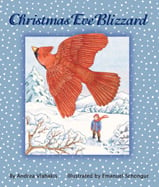Alignment to Standards for TX

| Grade | Number | Standard |
|---|---|---|
| 1 | 112.12 (b) (10) | organisms resemble their parents and have structures and processes that help them survive within their environments. |
| 1 | 112.12 (b) (10) (A) | external characteristics of an animal are related to where it lives, how it moves, and what it eats |
| 1 | 112.12 (b) (5) (A) | classify objects by observable properties of the materials from which they are made such as larger and smaller, heavier and lighter, shape, color, and texture |
| 1 | 112.12 (b) (7) | the natural world includes rocks, soil, and water that can be observed in cycles, patterns, and systems. |
| 1 | 112.12 (b) (8) (C) | identify characteristics of the seasons of the year and day and night |
| 2 | 112.13. (b) (10) (A) | compare how the physical characteristics and behaviors of animals help them meet their basic needs such as fins help fish move and balance in the water |
| 2 | 112.13. (b) (8) | there are recognizable patterns in the natural world and among objects in the sky. |
| 2 | 112.13. (b) (8) (B) | identify the importance of weather and seasonal information to make choices in clothing, activities, and transportation |
| 2 | 112.13. (b) (9) (B) | factors in the environment, including temperature and precipitation, that affect growth and behavior such as migration, hibernation, and dormancy of living things |
| 3 | 112.14. (b) (10) | organisms undergo similar life processes and have structures that help them survive within their environments. |
| 3 | 112.14. (b) (10) (A) | explore how structures and functions of plants and animals allow them to survive in a particular environment |
| 3 | 112.14. (b) (10) (B) | some characteristics of organisms are inherited such as the number of limbs on an animal or flower color and recognize that some behaviors are learned in response to living in a certain environment such as animals using tools to get food |
| 3 | 112.14. (b) (8) | The student knows there are recognizable patterns in the natural world and among objects in the sky. |
| 3 | 112.14. (b) (9) | organisms have characteristics that help them survive and can describe patterns, cycles, systems, and relationships within the environments. |
| 4 | 112.15. (b) (10) | organisms undergo similar life processes and have structures that help them survive within their environment. |
| 4 | 112.15. (b) (8) (C) | collect and analyze data to identify sequences and predict patterns of change in shadows, tides, seasons, and the observable appearance of the Moon over time. |
| 5 | 112.16. (b) (10) | organisms undergo similar life processes and have structures that help them survive within their environments. |
| 5 | 112.16. (b) (10) (B) | differentiate between inherited traits of plants and animals such as spines on a cactus or shape of a beak and learned behaviors such as an animal learning tricks or a child riding a bicycle |
| 5 | 112.16. (b) (8) | there are recognizable patterns in the natural world and among the Sun, Earth, and Moon system. |
| 5 | 112.16. (b) (8) (A) | differentiate between weather and climate |
| 5 | 112.16. (b) (9) | there are relationships, systems, and cycles within environments. |
| K | 111.12 (K.2) (B) | is expected to name the ordinal positions in a sequence such as first, second, third, etc. |
| K | 112.11 (b) (10) | organisms resemble their parents and have structures and processes that help them survive within their environments. |
| K | 112.11 (b) (3) (B) | make predictions based on observable patterns in nature such as the shapes of leaves |
| K | 112.11 (b) (8) | there are recognizable patterns in the natural world and among objects in the sky. |
| K | 112.11 (b) (8) (A) | observe and describe weather changes from day to day and over seasons |
| K | 112.11 (b) (8) (B) | identify events that have repeating patterns, including seasons of the year and day and night |
| PK | PK.1. (J) | compares objects and organisms and identifies similarities and differences |
| PK | PK.1. (K) | sorts objects and organisms into groups and begins to describe how groups were organized |
| PK | PK.2. (B) | describes properties of objects and characteristics of living things |
| PK | PK.2. (C) | begins to recognize patterns in their environment (e.g., day follows night, repeated phrases in storybooks, patterns in carpeting or clothing) |
| PK | PK.2. (H) | uses patterns (such as growth and day following night to predict what happens next) |
| PK | PK.2. (I) | identifies similarities and differences among objects and organisms |